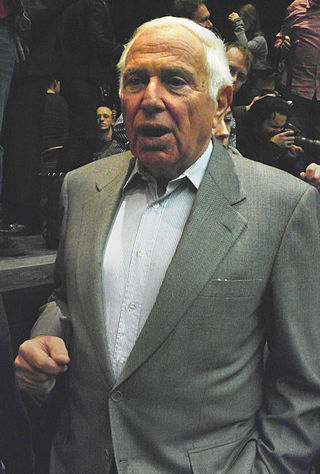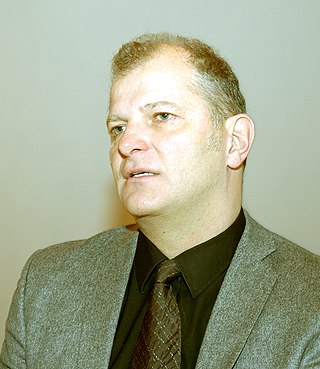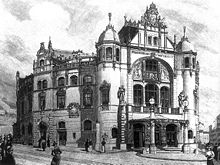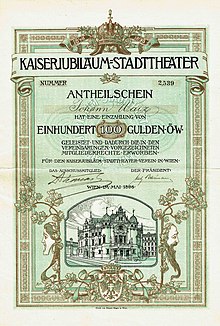
Richard Tauber was an Austrian lyric Tenor and film actor. He sang the tenor role in number of operas, including Don Giovanni by Mozart and Da Ponte.

The Teatro Massimo Vittorio Emanuele is an opera house and opera company located on the Piazza Verdi in Palermo, Sicily. It was dedicated to King Victor Emanuel II. It is the biggest in Italy, and one of the largest of Europe, renowned for its perfect acoustics.

Heinrich Conried was an Austrian and naturalized American theatrical manager and director. Beginning his career as an actor in Vienna, he took his first post as theater director at the Stadttheater Bremen in 1876. In 1878 he relocated to New York City where he remained for the rest of his career, serving initially as director of the Germania Theatre (1878-1881), followed by posts at the Thalia Theatre (1881-1882), New York Concert Company (1882-1883), and the Irving Place Theatre (1883-1903) In 1903 he became director of the Metropolitan Opera in New York City, a post he remained in until his retirement in 1908.

Franz Salmhofer was an Austrian composer, clarinetist and conductor. He studied the clarinet, composition and musicology in Vienna. Salmhofer served successively as Kapellmeister of the Burgtheater, Director of the Vienna State Opera and Director of the Vienna Volksoper and composed a number of works, few of which are played today.

Ioan Holender is a Romanian born Austrian opera baritone and administrator.

Martin Kušej is an Austrian theatre and opera director, and is director of the Burgtheater Vienna. According to German news magazine Focus, Kušej belongs to the ten most important theatre directors who have emerged in the German-speaking world since the millennium. He is considered one of the most important directors working today, acclaimed for his dark and incisive productions.
Lena Belkina is a Ukrainian mezzo-soprano.

Omer Meir Wellber is an Israeli conductor and composer.

Eytan Pessen is a pianist and voice teacher, currently at the Opera houses of Amsterdam, Frankfurt, Hamburg, Vienna (Volksoper), Zürich and international festivals. He was former opera director of the Semperoper in Dresden, artistic advisor to Teatro Massimo in Palermo, Teatro San Carlo in Naples, and former casting director of the Staatstheater Stuttgart.

Nikolaus Bachler, is an Austrian theater and opera director and actor.
Lotte de Beer is a Dutch opera director.
Therese von Braunecker-Schäfer was an Austrian theatre actress, singer (soprano) and dancer.
Peter Minich was an Austrian stage actor who became a tenor performing in operas, operettas and musical films. He was for decades the lead tenor of the Volksoper in Vienna, focused on Viennese operetta.

Hans Duhan was an Austrian operatic baritone. He belonged to the ensemble of the Vienna State Opera for 26 years and was the first Count Almaviva and the first Papageno of the Salzburg Festival.

Marie Charlotte Cäcilie Geistinger (1836–1903) was a celebrated Austrian actress and operatic soprano, known as the "Queen of Operetta". She frequently appeared in works by Jacques Offenbach, Johann Strauss II and Franz von Suppé. She achieved particular acclaim for performing Rosalinda in the première of Die Fledermaus at the Theater an der Wien in 1874. In 1881, her debut at the Thalia Theatre in New York was well received.
Heinz "Honzo" Holecek was an Austrian bass-baritone, known as an opera and operetta singer as well as a lied interpreter, was also a Viennese "all-round artist" – actor, parodist, and entertainer.
Guido Mancusi is an Austrian-Italian conductor and composer.
Olivier Tambosi is an Austrian opera and operetta director.

Adolf Rott was a German theatre director, theatre artistic director, and theatre manager. From 1954 to 1959, he was director of the Vienna Burgtheater.

The Ronacher theater, originally Etablissement Ronacher, is a theater in the Innere Stadt district of Vienna, Austria.
















